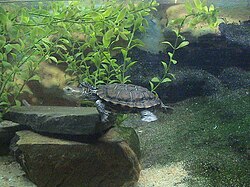Media release from ARC CoE for Environmental Decisions (CEED) at SciNews
In a bid to save endangered animals from extinction by climate change, a team of Australian and New Zealand environmental scientists has pioneered a revolutionary way of deciding whether animals can safely be re-located.
“With the climate changing more rapidly than species can move or adapt, our only chance of saving some species may be to move them to more climatically suitable areas,” says lead author Dr Tracy Rout of the ARC Centre of Excellence for Environmental Decisions (CEED) and The University of Melbourne.
“But introducing species to areas outside their historical range is a controversial strategy – and we have to be sure it will work, both for the animals themselves, and for other species in their ‘new’ habitat.”
The researchers developed a rigorous framework which can quantify whether the benefit of moving a species outweighs the ecological cost. The study, published in the journal PLOS ONE, is intended to help wildlife managers take the difficult decision whether to move animals into new areas – or leave them in places that may become uninhabitable for them.
“The critically endangered Western Swamp Tortoise is one possible candidate. Australia’s rarest reptile, it currently faces extinction as the swamps it calls home dry up due to declining seasonal rainfall. One way to save the species is to move it to new sites far to the south of its current range on the outskirts of Perth,” she explains
“Another is the Mountain pygmy possum, a tiny mammal that currently resides on three snowy mountain tops in Victoria and New South Wales where snow cover is rapidly declining. A third is the Golden Bowerbird, a strikingly yellow rainforest bird from north Queensland.
“When we move an animal, we need to be certain that it will not only survive and prosper, but it will do no harm to other species in its new habitat.”
At present such decisions are already being taken by wildlife managers around the world using a mix of subjective judgement and scientific prediction. The team has taken a lot of the guesswork out of this process by developing the world’s first rigorous quantitative framework that combines scientific prediction with clear management goals.
“Our framework separates these out, makes them explicit, and then combines them in a logical way,” Dr Rout says.
“Our approach uses tried and tested tools from economics and applied mathematics to make smarter conservation decisions,” explains Professor Hugh Possingham, co-author and director of the ARC Centre of Excellence for Environmental Decisions.
“This new framework takes into account the benefit of moving a species based on the likelihood it will go extinct in its original habitat as the local climate becomes hostile, the likelihood that a breeding population can be established at a new site, and the value or importance of the species.
“The ecological cost depends on the potential for the species to adversely affect the ecosystem at the new site. Species are considered candidates for re-location only if the benefit of doing so is greater than the ecological cost.”
The framework is intended to support the revised “IUCN guidelines for re-introductions and other conservation translocations”, which explicitly calls for structured decision-making frameworks for conservation introductions.
The researchers have ‘test-driven’ the new framework using the hypothetical case of the New Zealand tuatara, the country’s largest reptile, which is being considered for relocation from its home on a number of small offshore islands in the north of NZ to the South Island, where it is currently extinct.
The study was funded by: The ARC Centre of Excellence for Environmental Decisions (CEED), The Environmental Decisions Hub of the National Environmental Research Program (NERP), The Climate Adaptation Flagship at CSIRO Ecosystem Sciences, The University of Queensland, The University of Melbourne, The University of Western Australia, and Massey University.
CEED is the Australian Research Council Centre of Excellence for Environmental Decisions. CEED’s research tackles key gaps in environmental decision making, monitoring and adaptive management.
Complementing CEED’s work is the research of the NERP Environmental Decisions Hub.
NERP is the National Environmental Research Program funded by the Australian Government. The Environmental Decisions hub develops and tests tools, ideas and strategies for tackling the major challenges facing Australia’s environmental managers and policy makers.
More information:
Dr Tracy Rout, CEED and University of Melbourne, +61 (0)7 3365 1378 or 0403 969 344
Professor Hugh Possingham, CEED and UQ, +61 (0)7 3365 2527 or +61 (0)434 079 061
Melisa Lewins, CEED, +61 (0)7 3365 2450


Sorry, the comment form is closed at this time.